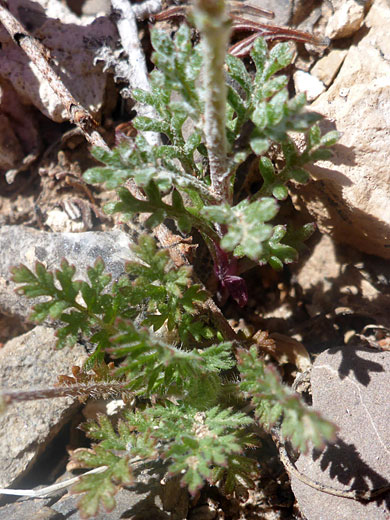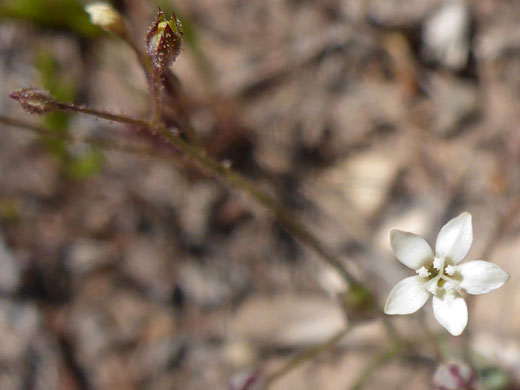Common name:
Eyed gilia
Family:
Scientific name:
Gilia ophthalmoides
Main flower color:
Range:
The Great Basin, eastwards to New Mexico
Height:
Up to 12 inches
Habitat:
Open, rocky locations, including in pinyon-juniper woodland, from 2,500 to 8,000 feet
Leaves:
Up to 2 inches long, once or twice pinnately lobed
Season:
March to June
Flowers of gilia ophthalmoides are often lighter in color than most other species; white to pale pink, though they can still be a dark pink. The corolla is up to half an inch long, about twice as long as the calyx, with a purple or yellowish throat, slender at the base, widening gradually to the lobes, which are relatively small, about equal in width to the throat. The stamens and style are slightly exserted. The calyx lobes are purplish, tapering to a sharp point, and separated by white membranes. The calyx is usually hairless.
Stems are sparsely glandular-hairy above, densely woolly-hairy below. Plants produce several stems, branching from the base, generally angled vertically upwards. Leaves also have a dense woolly hair covering, and are pinnately divided into a dozen or more small lobes, themselves lobed, or toothed.
Stems are sparsely glandular-hairy above, densely woolly-hairy below. Plants produce several stems, branching from the base, generally angled vertically upwards. Leaves also have a dense woolly hair covering, and are pinnately divided into a dozen or more small lobes, themselves lobed, or toothed.
All Contents © Copyright The American Southwest | Comments and Questions | Contribute | Site Map



